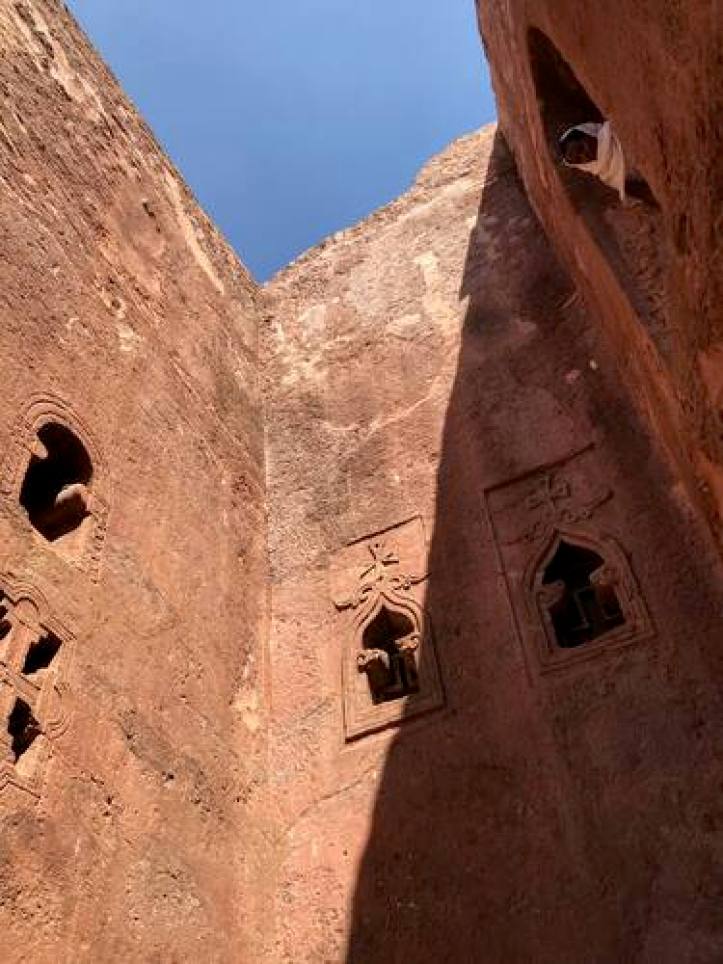
An unexpected and spectacular site greets the visitor to the town of Lalibela, Ethiopia. There, he or she will come face to face with eleven monolithic cave churches carved deep into the mountains. These monuments of the Christian faith were constructed in the 12th to 13th centuries. They were hewn from solid rock, complete with doors, windows, columns, and roofs. And they are equipped with an extensive system of drainage ditches, trenches and ceremonial passages, some with openings to hermit caves and catacombs. This is literally a high place of Ethiopian Christianity and it remains today a place of pilgrimage and devotion. For its “unique artistic achievement, in execution, size and the variety and boldness of their form”, the site was awarded UNESCO World Heritage Site status in 1978.
Lalibela is situated some 645 km from Addis Ababa, the capital of Ethiopia. Under the order of King Lalibela, an army of workers using nothing more than chisel and hammer, carved the eleven monolithic churches named after the king, whose vision was to construct a ‘New Jerusalem’ after Muslim conquests halted Christian pilgrimage to the Holy Land. In the centuries after that, Lalibela became a substitute for the holy places of Jerusalem and Bethlehem, and as such has had considerable influence on Ethiopian Christianity.














DOCUMENTARY VIDEO
Join photo-journalist David Adams as he makes the pilgrimage to Lalibela, and onward to Gondar in the northern wilds of Ethiopia in the quest to find the Biblical Ark of the Covenant. The first 11:37 minutes of the film gives a glimpse of the awe-inspiring churches of Lalibela.